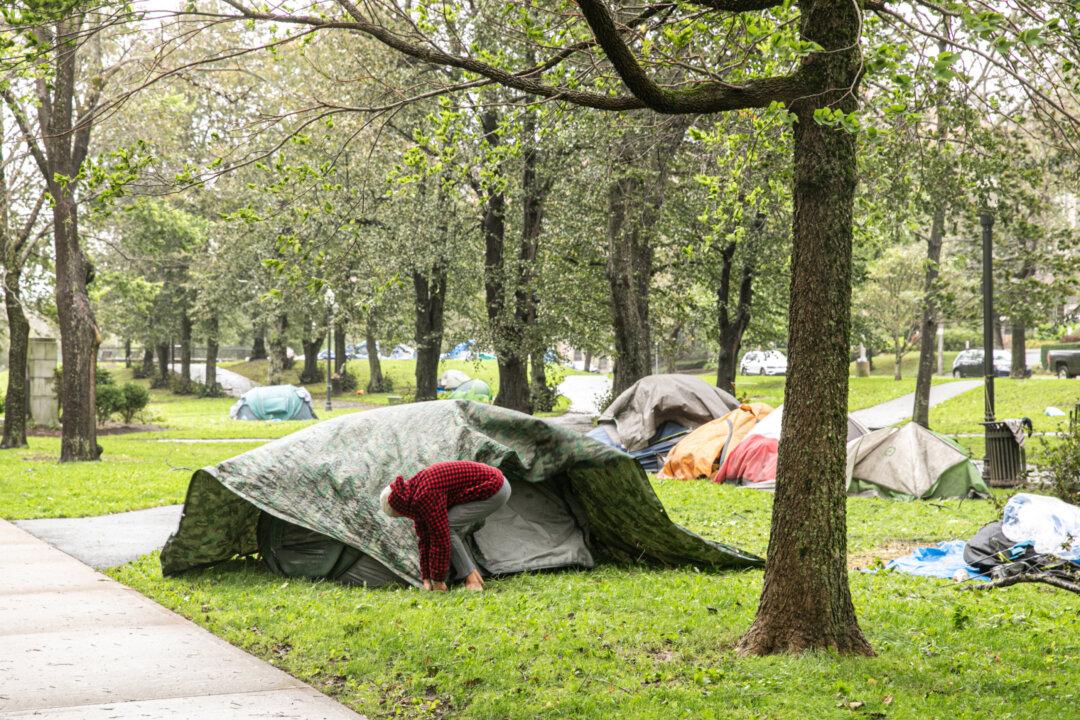The number of homeless encampments nationwide is growing, and so is the case law saying cities can’t remove them.
ANALYSIS: Green Light for Homeless Camps in Hamilton’s Parks Signals Where Canada May Be Headed
Hamilton has voted to allow homeless encampments in parks, as legal battles rage over tearing encampments down.

A woman struggles to keep her tent upright at the encampment in Victoria Park in Halifax during post-tropical storm Lee on Sept. 16, 2023. Kelly Clark/The Canadian Press




